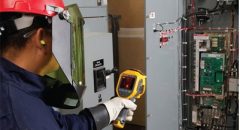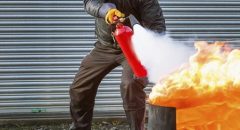Fire Load Calculations
Fire load calculations determine the total potential heat energy from combustibles within a space—critical for fire safety design, compliance, and risk assessment.
Understanding Fire Load
Definition
Fire load is the total heat energy from all combustibles under complete combustion. Fire load density = total heat (MJ) ÷ floor area (m²).
Why it matters
It quantifies fire severity, supports structural fire resistance design, and guides fire protection planning.
Units
Expressed in MJ/m² or kcal/m²—offices often <300 MJ/m², warehouses can exceed 1000 MJ/m².
Key Factors Affecting Fire Load
- Combustibles: Type, mass, and calorific value (e.g., paper ≈ 17 MJ/kg, plastic ≈ 35 MJ/kg).
- Area & Layout: Larger or poorly ventilated compartments retain more heat.
- Arrangement: Stacking height, ventilation, and spacing affect burn intensity.
How Fire Load is Calculated
Formula: Fire Load = Σ (mass × calorific value) ÷ area
Example: (100 kg × 17 MJ/kg + 30 kg × 35 MJ/kg) ÷ 20 m² = ~138 MJ/m².
Methods:
- Weighing: Measure materials directly.
- Inventory: Use records and densities.
- Combined: Most accurate hybrid approach.
Interpreting Results
- Low hazard: <250 MJ/m²
- Moderate hazard: 250–1000 MJ/m²
- High hazard: >1000 MJ/m²
High fire loads demand stronger fire resistance, enhanced suppression, and stricter compartmentation.
Compliance & Standards
Fire load is referenced in NFPA 557 and national building codes. Calculations are required for fire audits, design approvals, and insurance compliance.
Accurate documentation ensures safety, accountability, and smoother inspections.
Real-World Applications
- Designing Sprinkler Systems: Determines water demand and coverage.
- Structural Fire Resistance: Defines fire duration for load-bearing elements.
- Warehousing & Storage: Identifies high-risk zones for added protection.
Best Practices
- Maintain updated combustible inventories.
- Use verified calorific data.
- Review when layouts or materials change.
- Integrate fire load data into your fire risk management plan.
Summary
Fire load calculations are essential for understanding potential fire severity, ensuring compliance, and optimizing safety system design. Regular assessments and documentation strengthen overall fire resilience.
Need an Expert Fire Load Assessment?
Ensure compliance and protect your facility with certified fire safety engineers.
Request a Fire Load Calculation Now
Get smarter responses, with Aura Safety & Risk consultants
What we offer
Our Services
Identify, evaluate, and control process hazards with expert risk assessments, ensuring safe, reliable, and compliant industrial operations.

Identify, evaluate, and control process hazards with expert risk assessments, ensuring safe, reliable, and compliant industrial operations.

Implement site safety plans, audits, and training to prevent accidents, ensuring safer construction environments and regulatory compliance.

Design, engineer, and audit fire protection systems ensuring reliable performance, asset safety, and adherence to national safety standards.

Empowering workforce with certified HSE, fire, and industrial safety training programs for skill development and regulatory competence.

Create immersive, interactive VR safety training modules for realistic learning experiences in hazard recognition and emergency preparedness.
How it works
Industry Consultation
Project Scoping & Industry Brief
Service Selection
Site Visit & Inspection
Audit & Analysis
Report Submission & Discussion
Frequently Ask Question
Fire load represents the total potential heat energy released if all combustible materials in a space burn completely. It’s vital for assessing fire severity, designing structural fire resistance, and ensuring compliance with fire safety standards such as NFPA 557 and local building codes.
Fire load is typically calculated using the formula:
Fire Load (MJ/m²) = Σ (mass × calorific value) ÷ floor area.
This requires knowing the weight and heat content of combustibles within a defined space. Depending on accuracy needs, calculations may be based on weighing materials, inventory data, or a combined method.
Key factors include the type and amount of combustibles, their arrangement and stacking height, ventilation, and floor area. Materials like plastics and rubber have much higher calorific values than paper or textiles, significantly increasing fire load density.
- Low hazard: <250 MJ/m² (e.g., offices, classrooms)
- Moderate hazard: 250–1000 MJ/m² (e.g., storage areas, workshops)
High hazard: >1000 MJ/m² (e.g., warehouses, manufacturing plants)
Higher fire loads require stronger structural fire resistance, improved suppression systems, and tighter compartmentation.
A certified assessment should be done during building design, major layout or material changes, or periodic fire safety audits. Regular reviews ensure compliance, accurate insurance reporting, and optimal fire protection design.
